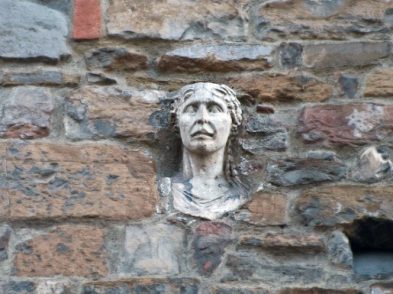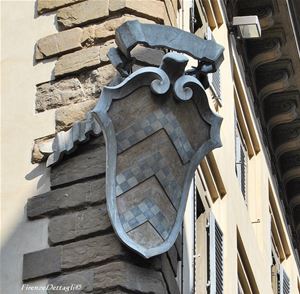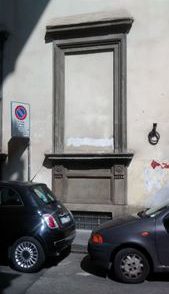Of all the reasons for coming to Tuscany,
spending weeks under the scorching sun digging in the dirt might not be high on
most people’s list. But that is precisely what scores of students, mostly
foreign, do every year. Italy, and particularly Tuscany, is one of the most
exciting places in the world for archaeologists and restorers, yielding almost
constant discoveries of artefacts from thousands of years of ago and bringing
back to life priceless artworks.
It’s not surprising that foreign students flock
to Tuscany for field-work and study opportunities. There are dozens of digs
throughout the region, some sponsored by Italian universities and research
groups, but also many by foreign schools, particularly those from the United
States. One such project, the Field School Pozzeveri, sponsored by Ohio State
University, recently made the local news for the discovery of a medieval
cemetery of 1,700 people.
The team of 26 young Americans and Canadians
from 17 different universities came across ‘Paradisino,’ as the cemetery has
come to be known, while they were excavating the remains of a church from the
Middle Ages, San Pietro a Pozzeveri, near Lucca. Also among the discoveries
were two long trenches, tentatively dated to the thirteenth to fourteenth
centuries, containing human remains covered in lime, suggesting that their
deaths may have been related to a catastrophic event.
These finds are ‘extremely important to
understand health, culture, and population dynamics in Tuscany and Italy from
the Middle Ages to modern times,’ explained program coordinator and instructor,
Giuseppe Vercellotti. ‘The archaeological work at this site is very important
because it allows us to reconstruct history and to explore life conditions in
the past at Badia Pozzeveri, one of the most important settlements located
along the Via Francigena,’ he added.
Those studying archaeology and restoration in
Tuscany sometimes have the opportunity to travel even further afield, as did a
group of five students from the restoration school of Istituto Lorenzo de’
Medici (LdM) in Florence. They went with their professor, Lorenzo Casamenti, to
Easter Island in the southeastern Pacific, to help rescue a set of historic
stone monuments, the 700-year-old Moai. Having developed in Florence a chemical
to combat the fungus that was decaying the stone of these ancient statues, the
group made the journey to the island last June to put it to the test-with great
success. ‘It’s been a dream come true to get to come to work on such important
historical monuments and preserve a really important cultural aspect of this
remote and very fascinating island,’ said Caitlin Southwick, one of the
students on the LdM project in Easter Island.
Back in Tuscany, around the time that the
children’s cemetery was being uncovered, students from Florida State University
were unearthing a medieval well at Cetamura in Chianti, and Spanish and Belgian
students were discovering a Roman port at Spolverino, in the Maremma National
Park, as well an ancient temple belonging to the cult of Diana at Scoglietto,
near Livorno.
Despite being covered in mud and dirt for days
on end, despite the heavy physical labour of moving mountains of top-earth, and
despite the fact that archaeologists often need to work painfully slowly,
sometimes lifting off only millimetres of soil at a time for fear of missing
something, the students who participate in these projects usually feel they
have had the experience of a lifetime.
‘I learned so much about so
many different things: archaeological methods, burial excavation, skeleton
removal, stratigraphical excavation, and GPS technology, just to name a few,
[as well as being able to] appreciate the culture and beauty that is offered by
Italy, its citizens, and its countryside,’ observed Mary Beth Glisson from
Sonoma State University, in California, who worked at Pozzeveri.
‘The [Spolverino] site is
amazing in archaeological terms,’ explained Daniel Diez Merida, from the
University of Madrid, ‘because this project helps us to understand the history
of this area and how people lived here during the Roman period.’
These kinds of experiences usually are not
available at these students’ home universities, which is why so many of them
head to Tuscany, turning their classroom studies of archaeology into hands-on
experience. The restorers, in turn, have the opportunity to learn intricate and
valuable skills in the city which has one of the most prestigious reputations
for restoration in the world. Both archaeologists and restorers are able to
learn invaluable techniques and provide material for theses and papers back
home.
And, most importantly, ‘life on the dig [is] a
hell of a lot of fun,’ remarked Kerri Pokorny-Nituch of Athabasca University,
in Canada, who worked at the Pozzeveri site.







